From Concept to Curb Appeal: Your Guide to Landscape Design & Build in Kansas City
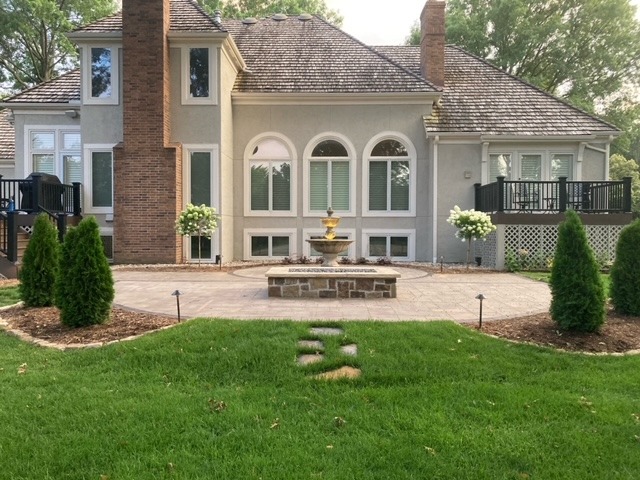
Are you staring at your backyard and wondering how to turn that ordinary space into something extraordinary? You’re not alone. Many homeowners feel stuck between big landscape dreams and the overwhelming reality of making them happen. Without the right approach, that perfect outdoor sanctuary can remain just that—a dream. This is where expert landscape design-build services in Kansas City come in. In this guide, you’ll discover the insider secrets to transforming your Johnson County or Kansas City property into the outdoor oasis you’ve always wanted. We’ll walk you through the entire process, breaking down complex decisions into manageable steps.
Ready to simplify your landscape journey and watch your vision come to life? Keep reading to see how your outdoor transformation is closer than you think.
What is Landscape Design Build?
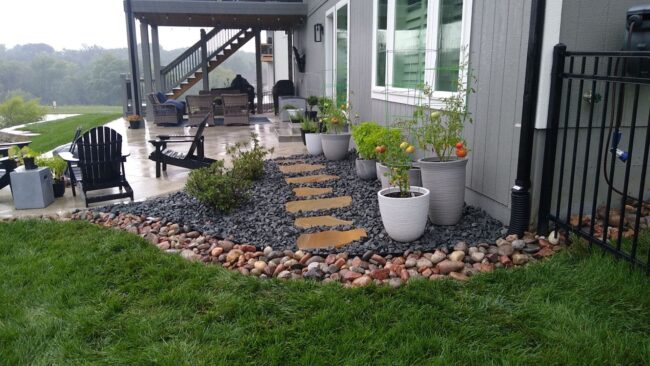
Landscape design-build is a comprehensive approach that blends both the design and construction aspects of landscaping. This method ensures a seamless transition from the initial concept to the final installation, allowing for better communication, efficiency, and project coherence.
The landscape design-build model is an integrated process, bringing creative and technical facets together. Unlike a traditional approach where design and construction are separate, this model unifies both processes to simplify the flow of ideas and better align the project with the homeowner’s overall vision. By having a single team oversee the entire process, continuity and cohesion are maintained throughout the project.
The Evolution of Design-Build in Landscaping
Historically, landscaping involved distinct stages with different teams handling each part. This often led to fragmented projects where the original vision could get lost in translation. The evolution of the design-build approach in the landscaping industry addressed these issues by merging the stages. As a result, this approach has become increasingly popular for homeowners seeking a seamless and efficient backyard transformation.
Benefits of Integrated Design and Construction
A significant advantage of the design-build process is the fusion of creativity and practicality. Designers and builders work in tandem, leading to designs that are aesthetically pleasing and technically feasible. This collaboration often results in more innovative solutions and tailored designs that meet the specific needs and desires of homeowners. The integration also means that potential issues are identified early, saving time and costs in the long run.
Curious to learn more about how we can help you create the perfect outdoor living space? Explore our landscape design services and start planning your dream yard today!
Why Choose a Design-Build Approach for your project?
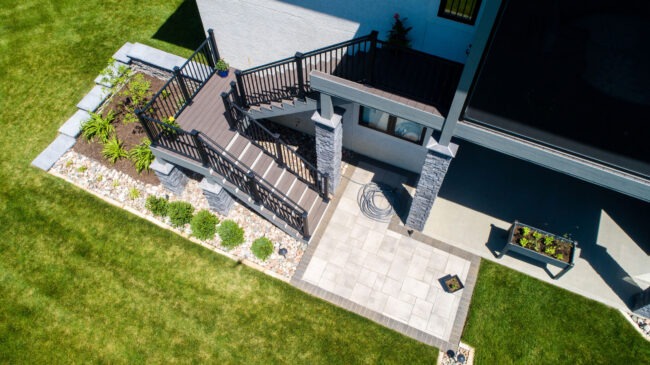
The design-build approach offers several advantages over traditional methods, making it a preferred choice for many homeowners in Kansas City.
1. Single Point of Contact
One of the most significant benefits of the design-build model is having a single point of contact throughout the project. This streamlined communication means that homeowners have one team to liaise with, reducing the complexity and potential for miscommunication. With all aspects of design and construction managed by a single team, any questions or concerns are more easily addressed. Ultimately helping the project stay on track and remain aligned with the client’s vision.
2. Streamlined Process
Integrating the design and construction processes minimizes delays and miscommunications that often plague traditional methods. Working with the same team from concept to the final creation allows for a better understanding of the project. This streamlined approach not only improves timelines, it ensures that every detail reflects the original intent.
3. Cost Efficiency
Cost management is a critical aspect of any landscaping project. The design-build approach often results in cost savings due to its integrated nature. When the same team handles both the project design and construction, there is a better understanding of the budget from the start. This helps you make smart choices about materials and design. It lowers the chance of surprise costs and keeps the project on budget.
4. Enhanced Creativity
Collaboration between designers and builders fosters a creative environment where innovative solutions can flourish. This synergy often leads to unique, personalized designs that might not have been possible in a traditional setup. By working closely together, the team can explore various design possibilities and technical solutions, ensuring that the final landscape is not only functional but also reflects the homeowner’s personality and style.
Understanding Landscape Design-Build Process

When it comes to creating a cohesive and functional outdoor space, the landscape design-build approach is a game-changer. This method combines the creative and technical aspects of landscaping into one seamless process, ensuring that your vision is brought to life with precision and care. Unlike traditional methods, where design and construction are handled separately, the design-build model integrates both phases under one roof. This not only simplifies communication but also ensures that every detail aligns with your goals.
Step 1: Initial Consultation
Establishing Your Vision: During the initial consultation, you and your landscaping contractor will discuss design concepts, preferences, and budget. This is the time to articulate your vision clearly as this step lays the groundwork for the entire project plan. For example, if you are dreaming of a serene garden design, or a more functional outdoor space complete with patio installation and integrated landscape lighting? Sharing these details clearly will help your team craft a plan that is exactly what you are envisioning.
Budgeting and Expectations: Discussing the budget and communicating your financial constraints in the initial consultation is important to ensure the project is feasible. The design-build team can help guide you on where to allocate resources effectively, offering suggestions that align with your budget while still achieving your desired outcome. For instance, if hardscaping features like retaining walls or drainage solutions are a priority, the team can help you balance these elements with other aspects of the design.
Exploring Design Possibilities: In this phase, the design team will introduce you to different styles, themes, and features that can be incorporated into your landscape. Whether it’s a modern, minimalist garden or a lush, traditional space, exploring these possibilities helps refine your vision and provide inspiration for the project. This exploration phase is pivotal in shaping the direction of the design plan.
Step 2: Site Analysis and Design Development
After the initial consultation, the next step is a detailed site analysis. This involves analyzing existing conditions, including soil quality, drainage, sunlight exposure, and any potential challenges.
Comprehensive Property Assessment: A thorough site analysis is crucial for understanding the unique characteristics of your property. This includes evaluating soil quality, drainage patterns, and sunlight exposure, as well as identifying any existing structures or obstacles. For example, if your property in Overland Park or Olathe has a sloped yard, the team in Kansas City might recommend retaining walls or drainage solutions to address erosion and water management. Understanding these elements helps the design team develop a plan that leverages the strengths of your site while addressing any challenges.
Crafting a Tailored Design: With the insights gained from the site analysis, the design team can begin crafting a tailored landscape design plan. This plan is a comprehensive blueprint that includes various elements such as patio installation, garden design, hardscaping, retaining walls, and landscape lighting. Each component is carefully considered to ensure it harmonizes with your home’s architecture and your personal style. For instance, if you’re looking to create a cozy outdoor living space in Kansas City, the team might suggest a combination of hardscaping and landscape lighting to enhance both functionality and ambiance.
Integrating Functional Elements: Functionality is a key consideration in the design development phase. The team will incorporate features that enhance the usability and enjoyment of your outdoor space. Whether it’s creating pathways that guide movement through the garden or installing irrigation systems that ensure plant health, these functional elements are seamlessly integrated into the design to enhance the overall experience.
Step 3: Design Presentation
Once the design plan is ready, it’s time for a design presentation. The landscape contractor in Kansas City will walk you through the proposed design, explaining each element and how it contributes to the overall aesthetic and functionality of your outdoor space.
Detailed Design Walkthrough: During the design presentation, you’ll receive a detailed walkthrough of the proposed landscape. This includes explanations of each design element and how they contribute to the overall vision. For example, if the plan includes a patio installation or landscape lighting, the team will explain how these features enhance both the beauty and usability of your outdoor space. The presentation is an opportunity to visualize how the various components come together to create a cohesive and functional finished product.
Gathering Feedback and Making Adjustments: Your feedback is invaluable in this phase. A good design-build team should encourage you to share your thoughts, whether it’s about specific design elements or the overall layout. This is the time to make any necessary changes to the design so that it aligns perfectly with your vision. The team is committed to refining the plan until it meets your expectations.
Finalizing the Design Plan: Once feedback has been incorporated and adjustments made, the design plan is finalized. This finalized plan serves as the roadmap for the construction phase, ensuring that every detail is executed as envisioned. With the design plan in place, the project is ready to move into the construction stage.
Step 4: Construction and Installation
With the design finalized, the construction phase begins. This is where the magic happens, and your outdoor space starts to take shape. The landscape installation process is carefully coordinated to ensure each element is implemented with precision.
Implementing Hardscaping Elements
The construction phase often begins with hardscaping, which includes the installation of patios, walkways, and retaining walls. These structures form the backbone of the landscape, providing functionality and aesthetic appeal. The team ensures each element is installed with precision, using high-quality materials that enhance durability and visual impact.
Bringing the Landscape to Life with Planting
Planting is a crucial component of the landscape transformation. The selection and placement of trees, shrubs, and flowers are done with careful consideration to create a lush, vibrant landscape. The team in Kansas City selects plants that complement the design and thrive in the local climate, ensuring a landscape that is both beautiful and sustainable.
Ensuring Longevity with Irrigation and Drainage Solutions
Proper irrigation and drainage are essential for the health and longevity of your landscape. Proper solutions are considered to ensure your plants receive the right amount of water while preventing issues like water-logging. These systems are designed to be efficient and low-maintenance, ensuring your landscape remains healthy and well-maintained.
Enhancing Aesthetics and Security with Lighting
Landscape lighting is a transformative element that enhances both aesthetics and security. Strategically placed lighting fixtures highlight key features of the landscape, create ambiance, and provide safety during nighttime hours. The lighting design is tailored to the specific needs and layout of your outdoor space, enhancing its overall appeal.
Step 5: Final Walkthrough and Maintenance Plan
After construction is complete, the landscape contractor will conduct a final walkthrough with you. This ensures everything meets your expectations and that you are satisfied with the end result.
Conducting a Thorough Walkthrough: The final walkthrough is an important step in the design-build process. During this walkthrough, the contractor will guide you through the completed landscape, ensuring that every aspect meets your expectations. This is your opportunity to address any final concerns and ensure that the project aligns with the original vision.
Understanding Your New Landscape: As part of the walkthrough, the contractor will explain the various features and elements of your new landscape. This includes guidance on how to use and maintain different components like lighting systems, irrigation and more. Understanding these features is essential for maximizing the enjoyment and functionality of your outdoor space.
Establishing a Maintenance Plan: A comprehensive maintenance plan is provided to help you keep your new landscape in pristine condition. This plan includes guidance on watering, pruning, and seasonal care, ensuring your outdoor space continues to thrive. The team is also available to offer ongoing support and advice, helping you maintain the beauty and health of your landscape for years to come.
Addressing Common Landscape Challenges in Kansas City

The unique combination of Kansas City’s climate patterns, clay-rich soils, and diverse architectural styles creates specific issues that differ from other regions. When properly addressed by an experienced professional, these challenges actually become opportunities to enhance an outdoor area and prevent further issues that result in higher costs to remedy. Understanding these common issues leads to making informed decisions about landscape design and overall maintenance needs.
Tackling Water Issues: Drainage Solutions for Your Property
Water management forms the cornerstone of every successful landscape in the Kansas City area. Locals often face challenges due to our region’s heavy clay soils and seasonal rain patterns. Both excess moisture and drought conditions significantly impact a property’s health, appearance, and structural integrity.
Identifying Drainage Problems: Watch for telltale signs that indicate drainage issues. Standing water after rainfall, persistently soggy lawn areas, soil erosion around foundations, water stains on basement walls, or consistently cleaning muddy paw prints throughout the house all suggest that your yard in Kansas City would benefit from professional drainage solutions. Early detection prevents thousands of dollars in potential damage to both your home and landscape.
Drainage Solutions: Effective water management requires holistic solutions modified to fit a property’s specific characteristics:
- French drains are strategically positioned to redirect water away from problem areas
- Properly buried downspouts that channel rainwater efficiently away from foundations
- Expert grading around homes to ensure water flows in appropriate directions
- Aesthetically pleasing dry creek beds that manage drainage while adding natural beauty
- Functional rain gardens that capture runoff while creating habitat for beneficial wildlife
Professional drainage assessments identify underlying issues before they cause extensive damage. Water problems left unaddressed often lead to costly foundation repairs or basement water damage — making proper drainage solutions both a protective measure and a valuable investment in your property’s long-term value.
When to Consider Alternatives to Traditional Grass
While a lush green lawn remains the aspiration of many Johnson County homeowners, certain areas in virtually every yard face ongoing challenges for grass growth. A landscape professional in Kansas City can identify these problematic areas and recommend alternative approaches that reduce maintenance frustration and improve overall visual appeal.
Problematic Areas for Grass Growth:
- Around trees, where shade and root competition make sustainable grass growth difficult
- Along fence lines, where maintenance becomes cumbersome and grass typically thins
- Narrow side yards and passages between structures, which receive uneven sunlight and water
- High-traffic paths, including pet routes and play areas, which quickly become compacted and muddy
- North-facing slopes or areas with poor soil quality that struggle to support healthy turf
The ongoing battle to maintain grass in these challenging areas creates a cycle of reseeding, sodding, and rehabilitation that costs both time and money. Knowing when to consider more sustainable alternatives breaks this costly cycle and creates distinctive landscape features that enhance property value.
Creative Alternative Solutions: Rather than fighting nature’s limitations, transform challenging areas into attractive, low-maintenance landscape features:
- Rock gardens featuring drought-resistant native plants that thrive in our Kansas climate
- Mulched beds with shade-loving perennials that flourish around trees
- Decorative gravel pathways along fence lines that provide both functionality and visual interest
- Hardscaped areas for high-traffic zones, using permeable pavers that allow water infiltration
- Dog-friendly landscaping zones utilizing materials that prevent mud while providing easy maintenance
Balancing Your Landscape with Color, Texture, and Size
Creating a visually appealing landscape requires more than selecting plants that look attractive individually. Professional landscape design balances various elements to create a cohesive outdoor space that enhances property value while providing year-round interest. This thoughtful approach transforms ordinary yards into extraordinary outdoor environments that reflect the homeowner’s personal style.
The Principles of Visual Balance: Every well-designed landscape incorporates three key elements:
- Color Harmony: Selecting plant varieties that provide complementary and contrasting colors through all four seasons
- Textural Interest: Combining different leaf shapes, sizes, and surfaces for visual depth
- Size Variation: Using a mix of tall, medium, and ground-level plants to create dimensional interest
These principles go beyond just plant selection and include hardscaping elements that complement the style of a home while providing structural support to softer plantings. The most successful landscapes incorporate formal and informal elements, to create spaces that feel both sophisticated and welcoming.
Year-Round Appeal: Professional landscape architects understand how to select plants that provide changing interest throughout the seasons, ensuring your landscape maintains its appeal year-round. By carefully balancing evergreens with flowering perennials and specimen trees with ornamental grasses, your landscape looks intentional and beautiful in every season. This approach ensures your yard remains engaging through changing seasons, rather than impressive for only portion of the year.
Creating Focal Points: Strategic placement of larger plants or architectural elements like fountains, pergolas or sculptures helps to guide the eye through the landscape. These focal points, when properly placed alongside supporting plantings, create a sense of order and purpose. The careful positioning of these elements guides visitors through the garden while creating moments of discovery and delight. Professional design principles make even modest-sized properties feel more spacious and create distinct “outdoor rooms” within larger landscapes.
Transforming Your Outdoor Space

One of the most exciting aspects of the landscape design-build process is the ability to create functional and beautiful outdoor living spaces. If it’s a a cozy patio for family gatherings or a luxurious garden retreat you’ve been dreaming of, the possibilities are endless. In Johnson County, many homeowners are increasingly turning to professional landscaping services to transform their yard into a show-stopping extension of their home. Let’s explore some of the most popular features that can elevate your outdoor space.
Creating Cozy Gatherings with Fire Pits and Fireplaces
Fire pits and fireplaces are timeless additions to any outdoor living space, offering warmth, ambiance, and a natural gathering spot for family and friends. Whether you prefer the rustic charm of a wood-burning fire pit or the convenience of a modern gas fireplace, these features can extend the usability of your outdoor space well into the cooler months.
Design Flexibility: Fire features can be customized to match your style. The possibilities are endless, ranging from sleek contemporary design, to traditional natural stone. For example, a landscape contractor in Overland Park might suggest integrating a fire pit into your patio installation, creating a seamless transition between your indoor and outdoor living areas.
Year-Round Enjoyment: With the addition of landscape lighting and comfortable seating, your fire feature can become the centerpiece of your backyard, perfect for everything from casual family nights to entertaining guests.
Entertaining with Outdoor Kitchens
For those who love to entertain, an outdoor kitchen is a game-changer. These spaces can be tailored to your needs, whether you’re looking for a simple grilling station or a fully equipped kitchen with countertops, sinks, and storage.
Customization Options: A professional landscape design-build team can help you design an outdoor kitchen that complements your home’s architecture and your personal style. For instance, if you’re in Olathe, you might opt for durable materials like stone or stainless steel that can withstand the local climate.
Enhanced Home Value: Beyond their functionality, outdoor kitchens add significant value to your property. They create a seamless flow between indoor and outdoor living, making your home more appealing to potential buyers if you ever decide to sell.
Enhancing Tranquility with Water Features
Water features, such as fountains, ponds, or waterfalls, bring a sense of calm and serenity to your landscape. The gentle sound of flowing water can transform your backyard into a peaceful retreat, perfect for relaxation and unwinding after a long day.
Custom Designs: Whether you’re envisioning a small, subtle fountain or a dramatic waterfall, a landscape architect can help you choose a design that fits your space and style. For example, a garden design in Johnson County might incorporate a water feature as a focal point, surrounded by lush plantings and hardscaping elements.
Low-Maintenance Options: Modern water features are designed to be low-maintenance, with options like recirculating systems that conserve water and reduce upkeep.
Defining Outdoor Areas with Pergolas and Shade Structures
Pergolas and shade structures are a functional yet architecturally interesting addition to any home. They define outdoor areas, provide a comfortable place to get out of the sun, and create a sense of intimacy in larger spaces.
Versatile Designs: From simple wooden pergolas to elaborate custom designs, these structures can be crafted to fit almost any property. For example, a landscape contractor might suggest a pergola to frame your new patio installation and create a much-needed shaded area for outdoor seating and dining.
Enhanced Comfort: By adding climbing plants or retractable shades, you can further enhance the comfort and beauty of the space, further proving their versatility in almost any project.
Considering an addition to your backyard? We specialize in curating show-stopping and custom landscape additions to any home.
Choosing the Right Landscape Contractor
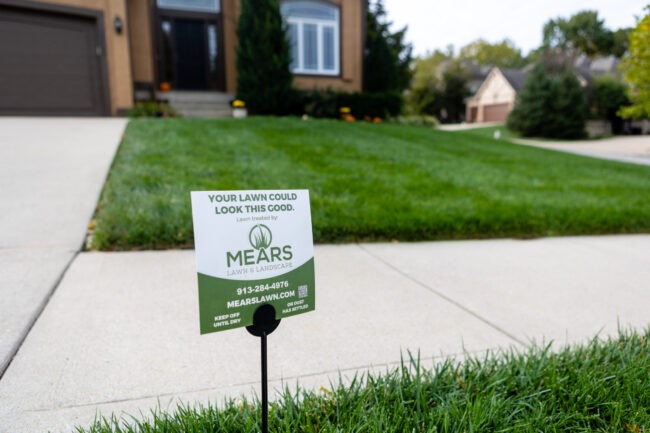
When embarking on a landscape design-build project, selecting the right landscaping company is important. Here are a few tips to help you make the best choice for your project:
Evaluating Credentials and Experience
Before hiring a landscape contractor, it’s important to verify their credentials and experience. Ensure the company is licensed and insured, which protects you and your property. Find a contractor with a good reputation in Johnson County. Local knowledge can be very helpful for a successful project. A contractor familiar with the unique climate and soil conditions will be better equipped to recommend plants, materials, and solutions that thrive in the area.
Reviewing Portfolios and Past Projects
Examining a contractor’s portfolio provides insight into their style and expertise. Review past projects to see if their work aligns with your vision and expectations. A diverse portfolio that showcases a range of styles — including residential landscaping or commercial projects — indicates a versatile and experienced contractor capable of handling your specific needs.
Gathering Insights from Customer Reviews
Customer reviews are a valuable resource for assessing a contractor’s reliability and quality of work. Look for reviews that highlight the contractor’s communication skills, attention to detail, and ability to deliver on time and within budget. Positive reviews from satisfied clients can provide peace of mind and confidence in your choice, ensuring you’re working with a reputable landscaping company.
Engaging in Open Communication
Communication is key to a successful working relationship. Don’t hesitate to ask your contractor questions regarding their process, timeline, and any warranties or guarantees they offer. A reputable contractor will be transparent and open, providing clear answers and setting realistic expectations for your project. This ensures a smooth and stress-free experience from start to finish.
Building Patios and Native Landscaping in Kansas City
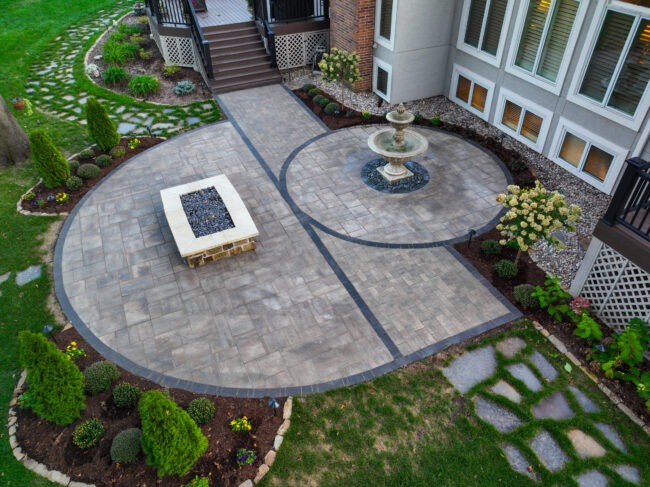
Incorporating a thoughtfully designed patio with native landscaping transforms your outdoor space into a functional and eco-friendly retreat. In Kansas City, where the climate ranges from hot summers to cold winters, selecting materials and plants suited to these conditions is crucial for longevity and sustainability.
Designing Patios for Kansas Living
A well-constructed patio serves as the cornerstone of outdoor living in Johnson County. Utilizing durable materials like natural stone or concrete pavers ensures resilience against Kansas’s weather extremes. Features such as built-in seating, fire pits, and pergolas not only enhance comfort but also increase the usability of your outdoor space throughout the year.
Embracing Native Landscaping
Integrating native plants into your landscape design offers numerous benefits, including reduced maintenance, improved biodiversity, and enhanced aesthetic appeal. Species like Purple Coneflower, Black-Eyed Susan, and Little Bluestem are not only visually striking but also adapted to thrive in Kansas’s soil and climate conditions. These plants support local pollinators and require less water and fertilizer, contributing to a more sustainable environment.
Harmonizing Hardscape and Softscape Elements
Combining the structural elements of patios with the natural beauty of native plants creates a harmonious balance between hardscape and softscape. This synergy results in an inviting outdoor area that reflects the natural charm of Kansas City while providing a practical space for relaxation and entertainment.
By focusing on patios and native landscaping, homeowners in Johnson County can create outdoor spaces that are both beautiful and environmentally responsible. Our design-build approach ensures that every element of your landscape is thoughtfully planned and expertly executed to meet your specific needs and preferences.
Bringing Your Vision to Life
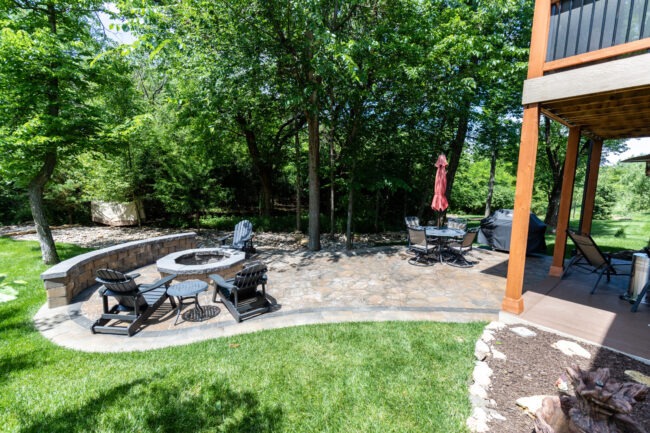
Starting a landscape design-build project is an exciting opportunity to transform your outdoor space into a stunning extension of your home. At Mears Lawn and Landscape, we specialize in turning your vision into reality with a comprehensive range of services guaranteed to enhance your property’s potential. To us, the journey isn’t just about transforming a space — it’s about elevating your lifestyle and creating a lasting investment in your home for years to come.
If you’re ready to explore how our landscape design build services can transform your property, contact our team at Mears Lawn and Landscape to schedule your consultation. Discover how our landscaping expertise can transform your property, and let us turn your concept into curb appeal!
Tags:

